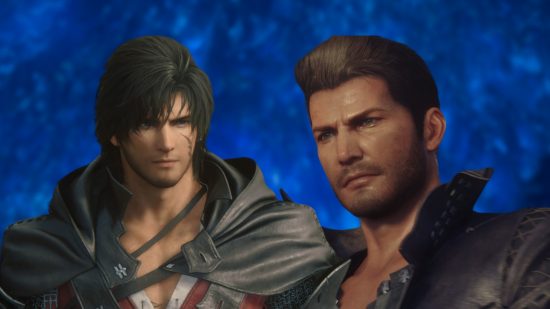If you’ve reached around the halfway mark of the FF16 story, you may be wondering why Clive is called Cid the Outlaw in Final Fantasy 16. This isn’t the first alias of Clive you’ve probably come across either, considering he’s also known as Wyvern, which is his codename during his time with the Empire.
We got to know all of the FF16 characters during our Final Fantasy 16 review playthrough, so we’re going to give you the rundown on why Clive takes the mantle of Cid the Outlaw in the latter half of the game. It’s a name so important, that it’s even the name of one of the Final Fantasy 16 main quests too.
Before we go any further, this guide contains spoilers on some major plot points at the halfway point of the story, so make sure to bookmark this page and come back to it if you’ve not reached this bit of the epic PS5 RPG.
Why is Clive called Cid the Outlaw in Final Fantasy 16?
Clive takes the mantle of Cid the Outlaw in Final Fantasy 16 after his friend, Cidolfus Telamon, dies during a mission to destroy Drake’s Head, one of the five Mothercrystals. Clive takes the alias to honor Cid’s legacy of the Hideaway, in hopes of saving more Bearers and Dominants.
Before Cidolfus’ death, Clive realizes that he needs to help in his mission to destroy the Mothercrystals, as they are a source of inequality in Valisthea. Plenty of kingdoms that build around these huge crystals offer power and riches to royalty, including characters like Hugo Kupka. In destroying these, Cid and Clive hope to even the playing field by removing the sources of magic.
During the raid on Drake’s Head in the Holy Empire of Sanbreque region, Cid successfully uses his Eikon, Ramuh, to shatter the heart of the Mothercrystal. It’s here where two of the main Final Fantasy 16 bosses, Typhon and Ultima, are revealed, and Typhon fatally injures Cid. After killing Typhon, Clive arrives at a dying Cid, who sits up and smokes a cigarette before giving Clive his Eikon abilities. It’s worth noting that the powers of Ramuh are some of FF16’s best abilities, so this is a significant moment.

Destroying a Mothercrystal is an act of blasphemy in Valisthea, and news of Cid’s actions spread like wildfire to the four corners of Valisthea, earning him the name of Cid the Outlaw. Clive decides to take the mantle that Valisthean people gave to the Hideaway’s leader as a way to keep the spirit of resistance alive and as an act of defiance.
Around the time of the fall of Drake’s Head, Hugo Kupka destroys the Hideaway, killing many and seriously injuring Cid’s dear friend Gav. During the five-year gap between the destruction of Drake’s Head and the next quest, Clive rebuilds the Hideaway in the middle of Valisthea’s seas, allowing them to keep the inhabitants safe.
We believe the main reason that Clive decides to take on the mantle isn’t just out of respect for the Hideaway’s people, but an almost token of gratitude for the late Cid. After being a slave to the Empire for 13 years, Cid took Clive in as a friend, almost as family, despite not knowing him before then. It’s clear to us that Clive wants to continue that tradition to other Bearers and exploited Dominants as a way to continue Cid’s legacy, without taking credit for Cid’s hard work before his passing.
It’s also a clear sign of Clive moving on from his time as a tool for the Empire. In this case, he was forced to use the name Wyvern as a sign of control. He was considered less than human by the Empire, and undeserving of his actual name. Instead, with Cid the Outlaw, he’s using another name to fuel the dreams and hopes of resistance, spreading a message to the people of Valisthea that there is a better world available to them if they fight back. You can see the cutscene where Clive abandons his Wyvern name below:

That’s why Clive takes the Cid the Outlaw name in Final Fantasy 16. If you’re wanting to know more about the story, you can find out why Clive’s mother betrays them in Final Fantasy 16, or jump straight to the finale with our Final Fantasy 16 ending explained guide.
